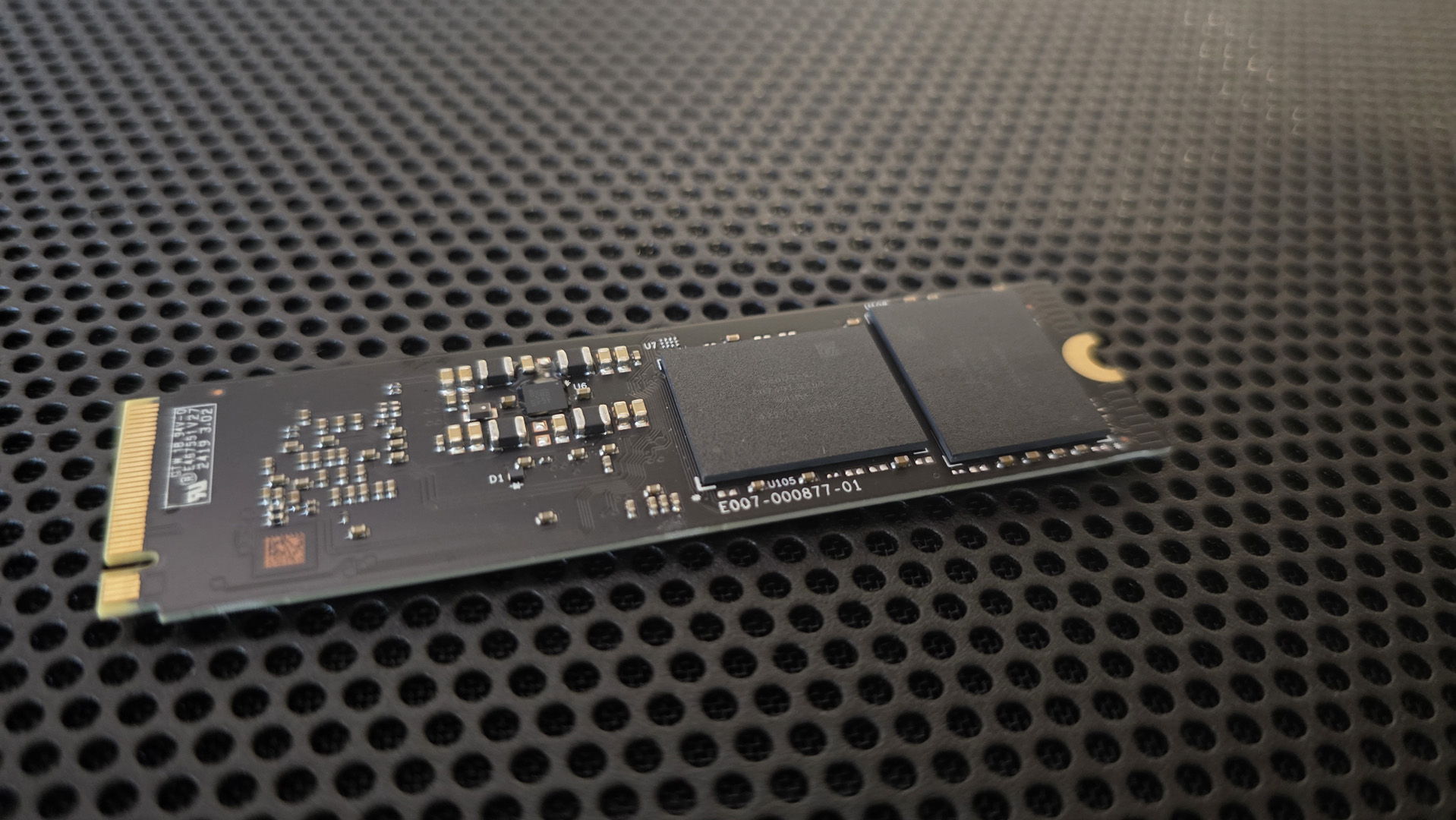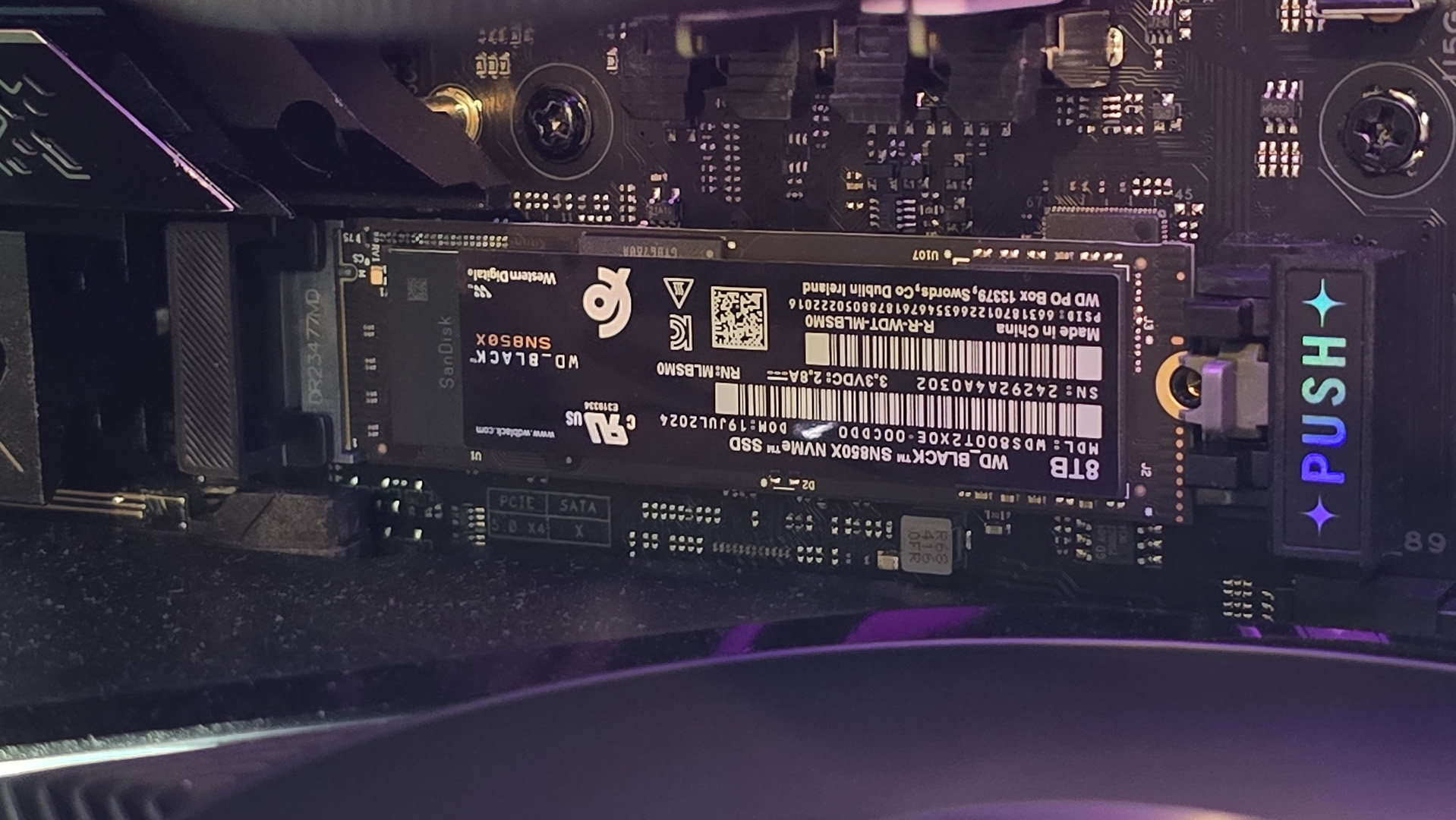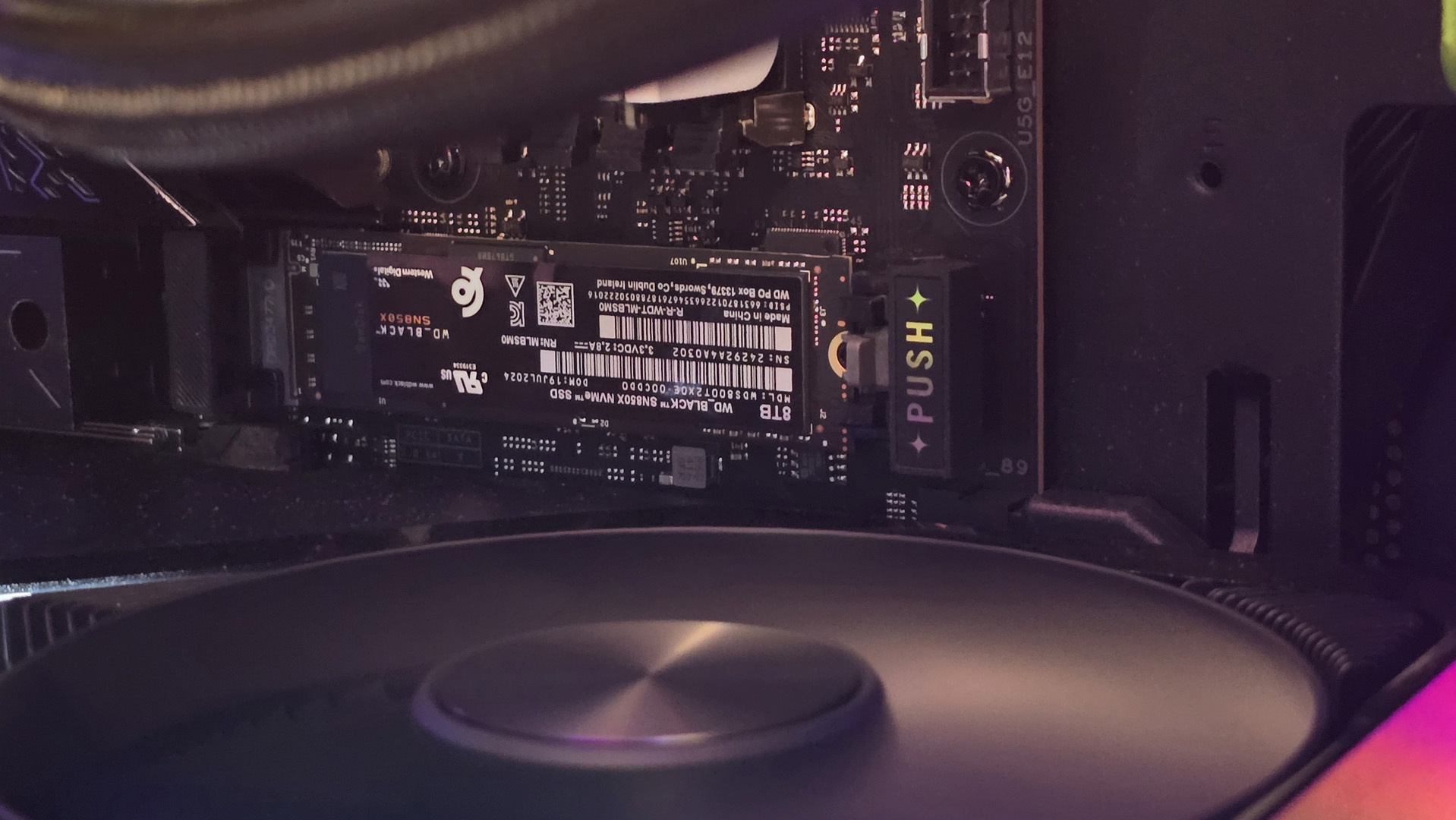WD Black SN850X 8 TB NVMe SSD review
That's eight terabytes of storage on a single PCIe SSD. Seriously. We've come a long way since the conception of M.2 solid state storage, haven't we? This beautiful, sleek little number from Western Digital pushes the limits of what's currently possible with just how much storage you can get on a single stick. It's nothing if not an engineering marvel. But it does create some pretty potent questions in its wake. Not only from your stereotypical hardware review perspective, but also from a use-case angle as well. Simply put, who is this for? How can you justify 8 TB of storage in the modern era of wildly rapid internet speeds and almost seamless cloud storage solutions?
WD's SN850X SSDs aren't exactly new in the field either. We reviewed WD's SN850X line when it first debuted to the world back in October of 2022. But at last, Joe Public has finally been gifted with an 8 TB update from the company. Complete with a revised controller, far denser NAND, and a seriously large price tag.
For core tech, the 8 TB variant is running a proprietary Sandisk controller built off the back of its Triton MP16+ B2 platform (the same one found in the original line-up). It's combined that with Kioxia's 162-layer BiCS6 TLC NAND, fed into four separate packages on the stick. That's then backed up by a healthy slab of DDR4 to keep everything nicely chundling along, and of course it all comes packaged in that ever faithful M.2 2280 form factor (albeit it is double-sided) complete with a heatsink option if you need it.
As for cost, well, since the 8 TB's initial launch, WD has rather intuitively hit it on the head with a pretty big price cut hammer. You can now pick one of these up for around $650 in the US (it did debut at $850). That's a smart move, given two 4 TB WD SN850Xs will set you back just $600 total. WD basically has a balancing act to do with this thing. It needs to simultaneously keep the stock flowing on the older units without compromising the sales on its new launch. Expect these prices to ping pong around quite a bit, particularly around deal seasons as a result.

Capacity: 8 TB
Interface: PCIe 4.0 x4
Memory controller: Proprietary (Triton MP16+ B2)
Flash memory: Kioxia 162-Layer BiCS6 TLC NAND
Rated performance: 7,200 MB/s sustained read, 6,600 MB/s sustained write
Endurance: 4,800 TBW
Warranty: Five years
Price: $649 | £647 | AU$1,331
As for performance, the SN850X 8 TB puts on quite the show. Sequential figures in Crystal Disk Mark comfortably sat around 7,100 MB/s for read and 6,590 MB/s for write in my testing. Both respectable for a 4.0 drive, and around about what WD's claiming it'll compete at, albeit slightly lower on both than advertised. Random 4K though, well, that is more of a cause for concern. With speeds of just 72 MB/s on the read and 298 MB/s on the write, it's one of the slowest modern PCIe 4.0 drives I've tested, second only to Samsung's 990 Evo Plus.
That's a bit of a problem, especially if you're looking at using this for a games drive.
Sadly, far smaller SSDs, such as Crucial's P310 or WD's own SN770M run rings around it in that metric. The SN770M clocking in 79 and 305 MB/s respectively, and the P310 manages a svelte 76 and 315 MB/s as well. Even WD's own Blue SN5000, a far cheaper Kioxia 162-layer QLC alternative, managed to hang in with at least 80 MB/s on the 4K read. That didn't translate exactly into our gaming tests, mind you, Final Fantasy XIV's Shadowbringers benchmark clocked in a respectable 7.283 second load time on average.
Those slower read and write speeds are likely due to an increase in latency as a result of the SN850X 8 TB housing four NAND chips instead of the two, or even one, found in those alternative drives. That then slows down overall read and write speeds across the board, albeit mildly. That also tallies up nicely with the other SN850X capacity options marketing materials, as they're all listed as having 7,300 MB/s read, rather than the 7,200 found on the 8 TB.
That's also likely a big reason why WD picked Kioxia's far denser NAND to facilitate the 8 TB too, given it's far quicker, yet it's still not quite enough to bring up to the same speed as its predecessors.
PC Gamer test bench
CPU: AMD Ryzen 9 9900X | RAM: 64 GB (2x32GB) Team Group T-Create Expert DDR5 @ 6000 C34 | GPU: Nvidia GeForce RTX 4080 Super | Motherboard: ASUS ROG Strix X870E-E Gaming WiFi | CPU Cooler: Asus ROG Ryujin III 360 ARGB Extreme | PSU: 1200W NZXT C1200 (2024) 80+ Gold | Chassis: Geometric Future Model 5
The bigger question you have to ask yourself though is, is this worth it? From a purely practical level, having an 8 TB drive like this (7.27 TB in Windows for those curious) is a bit of a risk.
As a manufacturer, if you're aiming for your SSD to become one of the best SSDs around at any given time, reliability and endurance are key elements on that journey. And by no means am I saying that WD doesn't have a reputation for those two very things; it really does. But, like all SSDs, these things have a lifecycle and data cells that can corrupt and degrade. Things can go wrong.




✅ You want the most capacity possible: Whether it's going into a PC or a PS5 Pro, WD's SN850X has the most storage we've seen from a single stick.
❌ You're looking for the best value and better reliability: Two 4 TB SN850Xs are not only cheaper, but also provide a bit more peace of mind on the reliability front.
If you're solely storing all of your games, media, or important documentation on a single 8 TB drive, without a suitable backup solution, and it all goes wrong, or your home gets struck by lightning and fries everything, that's a critical error that could cost you far more than the value of the drive itself.
From a gaming perspective, is the cost worth the convenience gained? If you have a solid internet connection already, doing the download, play, delete, and re-download shuffle isn't exactly that arduous of a task either. Which again hits the SN850X 8 TB on the nose a little. Sure, if you're spending days downloading the latest Diablo IV expansion, then maybe it'd be worthwhile, but even then, you're likely still far better off having far cheaper, slightly faster, twin PCIe 4.0 4TB drives instead. It's just far more practical, at least if your motherboard can support it.
Still, that aside, what's fascinating about this drive is actually not what it represents now, but what it means for the future.
When the initial 4 TB variant launched back in 2022, it had an RRP of an incredible $700. Today, at the time of writing this review, you can pick one up for just shy of $292. That's a drop in price to just 41% of what it was at launch, in the space of two years. That's a radical price cut, and the same's true of its competition too. With that mind, will 2026 finally be the year that we get 4 TB SSDs for $140, and this 8 TB solution doesn't seem quite so outlandish? I'm hopeful, that's for sure, and hopefully all of this will be a moot point.

Post a Comment